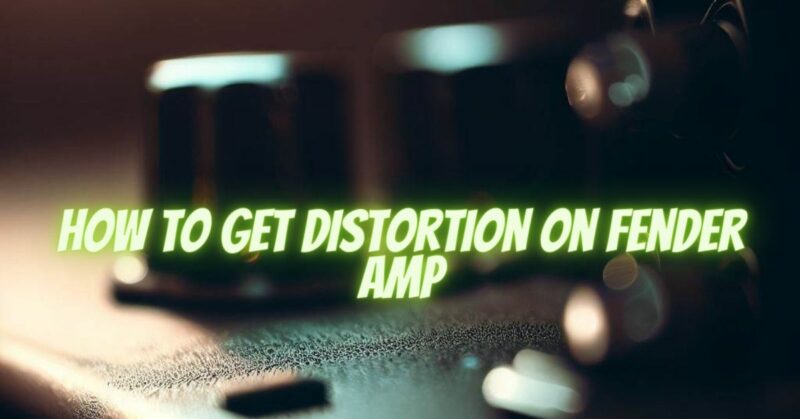Fender amps are renowned for their clean and pristine tones, but they are also capable of delivering satisfying distortion when approached with the right techniques and equipment. If you’re seeking to add some grit and crunch to your Fender amp, this article will guide you through various methods to achieve distortion while preserving the unique characteristics of your amplifier.
- Gain and Volume Balancing:
Fender amps often have a lower gain structure compared to high-gain amplifiers. Begin by setting the gain control to a moderate level, and then increase the volume to match your desired loudness. Finding the sweet spot between the gain and volume controls allows you to push the amp’s clean tone into a natural, harmonically rich overdrive.
- Boost or Overdrive Pedals:
Incorporating a boost or overdrive pedal into your signal chain can significantly enhance the distortion capabilities of your Fender amp. By engaging the pedal, you can increase the gain and saturation without compromising the amp’s inherent tone. Experiment with different pedal settings to find the perfect balance that adds the desired amount of crunch while retaining the amp’s clarity.
- Tube Swap or Modification:
Swapping out the preamp or power tubes in your Fender amp can have a noticeable impact on its gain and distortion characteristics. Consult with a qualified technician or do thorough research to ensure compatibility, and explore tube options known for their distortion capabilities. Different tubes can alter the amp’s response, resulting in a smoother or more aggressive distortion. However, it’s important to exercise caution and follow proper procedures when working with tube-based amplifiers.
- Adjusting the EQ:
Tweaking the EQ controls on your Fender amp can shape the distortion characteristics. Boosting the midrange frequencies can add more bite and presence to the distorted tone, while reducing the bass frequencies can prevent muddiness. Experiment with the treble, mid, and bass controls to find the tonal balance that suits your playing style and enhances the distortion sound.
- Power Soak or Attenuator:
If your Fender amp has higher wattage and lacks a built-in attenuator, consider using a power soak or attenuator device. These devices allow you to reduce the output level of the amplifier while retaining the natural power tube saturation. By cranking the amp’s volume and reducing the output level, you can achieve distortion at lower volume levels, making it suitable for both practice and live situations.
- Explore the Vibrato Channel:
Many Fender amps feature a second channel with vibrato or tremolo effects. This channel often has higher gain capabilities than the clean channel, making it a suitable option for achieving distortion. Experiment with the volume and tone controls on the vibrato channel, and consider using pedals or modifications mentioned earlier to further shape and enhance the distortion sound.
Conclusion:
While Fender amps are renowned for their clean tones, they can also deliver satisfying distortion when approached with the right techniques. By balancing the gain and volume controls, incorporating boost or overdrive pedals, exploring tube options, adjusting the EQ settings, utilizing power soaks or attenuators, and exploring the vibrato channel, you can unlock the crunch and grit on your Fender amp while retaining its signature clarity and character. Embrace these methods, experiment with different settings, and let your Fender amp unleash a whole new world of distortion possibilities.


